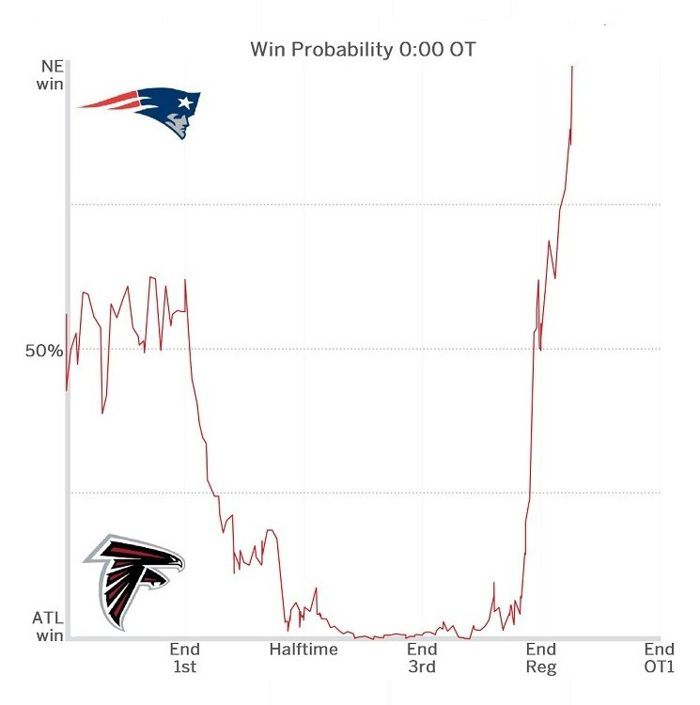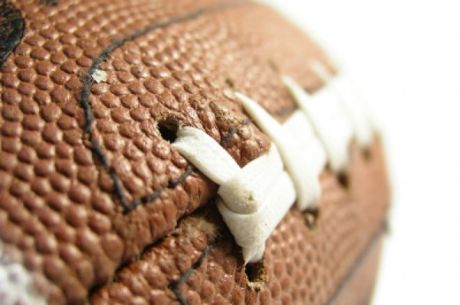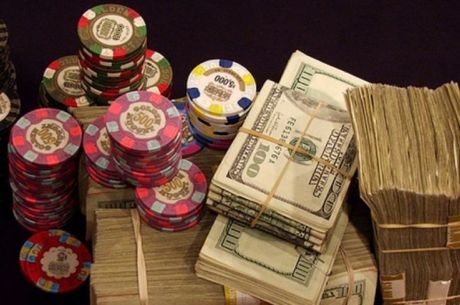Patriots Use Their One Time in Super Bowl Comeback

Sunday night saw one of the more exciting Super Bowls ever played �� and a historically improbable one, as well. The New England Patriots incredibly managed to overcome a 25-point third-quarter deficit in to the Atlanta Falcons, scoring 31 unanswered points to win 34-28 in overtime.
Down 28-3 with just over two minutes to go in the third quarter, New England scored a touchdown and missed the extra point to make it 28-9 heading into the fourth. The Patriots then kicked a field goal and scored two more touchdowns, successfully converting two-point conversions each time to make it 28-28 and send the game to overtime �� the first OT game in 51 years of Super Bowls.
New England then won the coin toss to start overtime, and drove the length of the field for a winning TD to win 34-28. The 25-point comeback was one of several team and individual records set in the game. Previously the largest comeback ever made had been just 10 points, accomplished three times before.
Over recent years, in-game "win probability" calculations have become popular for fans and media following NFL games. The calculations are made by looking at numerous variables, including the current score, the down and distance, field position, time remaining, and other factors. That information is then compared to the historical performance of teams in similar situations �� culled from thousands of previous games �� to create a "WP" percentage for each team that changes with every play.

Unsurprisingly, the win probability chart for Super Bowl LI �� such as the one tweeted after the game by ESPN Stats & Info at right �� is remarkable to consider. As Atlanta built its big lead, so, too, did its win probability increase, peaking at more than 99 percent late in the third quarter. From there started New England's climb, although it wasn't until the final minute of the game when New England tied the score that the Patriots' WP got back over 50 percent.
Poker players are well familiar with probabilities, with a knowledge of them an essential component to a sound strategy. Probabilities in poker are also more accurate than are NFL win probabilities, given how the latter does contains a margin of error.
NFL win probabilities are affected by imperfections in describing particular game states and a somewhat limited historical sample size (even with thousands of games). Meanwhile in poker, the probability (say) of hitting one of your needed outs to complete a flush with only the river to come never changes �� it's always going to be just about 19.57 percent (nine outs / 46 unseen cards).
As a way of reliving the craziness of Super Bowl LI, here are the win probabilities calculated for several key moments during the game further expressed as all-in situations in Texas hold'em. The win probabilities are taken from ESPN's interactive graph, while the poker probabilities come from the PokerNews Texas Hold'em Poker Odds Calculator.
1st quarter (15:00): New England 0, Atlanta 0
The Patriots �� a three-point betting favorite to begin the game �� received the opening kickoff, and thus the game began with New England possessing the ball and a 56.2 percent win probability. The situation compares to New England being all in before the flop with ace-jack offsuit versus Atlanta's suited king-queen.
Preflop
New England: A?J?
Atlanta: K?Q?
2nd quarter (14:19): New England 0, Atlanta 0
The first quarter was scoreless, and the second quarter began with New England having just moved into Atlanta territory. A fumble by Pats running back LeGarrette Blount was recovered by Atlanta, and the win probability edge shifted Falcons' way, making them 51.8 percent to win �� still a virtual "coin flip."
Preflop
New England: A?Q?
Atlanta: 6?6?
2nd quarter (12:04): New England 0, Atlanta 7
Atlanta needed just five plays and two minutes to score a touchdown, taking the lead and moving up to a WP of 72.6 percent shortly after the Patriots got possession again.
Preflop
New England: A?6?
Atlanta: K?K?
2nd quarter (2:21): New England 0, Atlanta 21
Atlanta would score two more TDs, including a dramatic 82-yard interception return by Robert Alford to make the score 21-0. Just after that "pick six," Atlanta suddenly had a 96.8 percent win probability, meaning we have to go to a postflop situation to find an analogue in hold'em. The situation was slightly worse, in fact, than the Patriots needing to hit a two-outer on the river.
Turn �� 7?5?2?2?
New England: 8?8?
Atlanta: A?A?
3rd quarter (6:12): New England 3, Atlanta 28
We move to the second half, and the Patriots' absolute low point, win probability-wise. They had the ball, but were down by 25 and facing a fourth-and-3 at their own 46-yard line with just over six minutes left in the quarter. Atlanta's win probability was peaking at 99.7 percent �� it was as though they could only lose to a most unlikely runner-runner type hand.
Here's an almost-perfect match from real life �� a hand from Season 11 of European Poker Tour Barcelona that you might recall from the final table of the �50,000 Super High Roller. Olivier Busquet was just 0.4 percent to win after his opponent Sven Reichardt flopped a full house, but running aces gave Busquet the hand.
We'll give Busquet's hand to New England, and Reichardt's to Atlanta.
Flop �� K?8?8?
New England: A?2?
Atlanta: K?K?
We might say the Patriots used their "one time" here... but there were still more "one times" to come.
4th quarter (4:47): New England 20, Atlanta 28
New England converted that fourth down and went on score a TD. Atlanta next had a three-and-out (followed by a NE field goal), then fumbled (and NE scored a TD and added a two-point conversion). The score was 28-20, but the Falcons got a drive going and after a great sideline reception by Julio Jones had a 1st-and-10 at the Patriots' 22-yard line with less than five minutes left.
The Falcons looked good, sitting on a 98.1 percent WP. Here's a close parallel, where the Falcons flop a set but the Pats need runner-runner to make a straight:
Flop �� A?10?2?
New England: 6?5?
Atlanta: A?A?
4th quarter (2:28): New England 20, Atlanta 28
The most memorable play in what would be the game-tying drive for New England was the tumbling catch made by Julian Edelman of a 23-yard Tom Brady pass to get the Patriots to the Atlanta 41-yard-line. The ball was tipped, and Edelman snared the ball, then released and recaptured it an inch or two above the turf before hitting the ground.
The probability of Edelman making that reception had to be low. But even after that catch, the Falcons were at 92.6 percent win probability, which made it something close this spot for the Pats looking for a backdoor straight or flush.
Flop �� J?5?3?
New England: 9?6?
Atlanta: J?J?
4th quarter (1:25): New England 20, Atlanta 28
Cut to a minute later, and New England had a first-and-goal at Atlanta's eight-yard line. Even so, they still had to score and get the two-point conversion, which meant the Falcons' win probability was at 75.4 percent �� actually a little better than a "dominated hand"-type preflop all-in.
Preflop
New England: K?Q?
Atlanta: A?K?
Overtime (11:18): New England 28, Atlanta 28
New England did score and convert the two-pointer to tie it, and regulation ended 28-28. Each team was at 50 percent win probability then, but when the Pats won the coin toss they swiftly grabbed the WP edge. In less than four minutes New England had a first-and-goal at the Atlanta two-yard line, and an 88.1 percent win probability.
Now it was as though Patriots were holding the aces, enjoying a WP that was even slightly better than this best-starting-hand-versus-worst spot:
Preflop
New England: A?A?
Atlanta: 7?2?
The aces held. Two plays later, James White ran it in from the two and the Patriots had won.
Postgame Disclaimers
A few final disclaimers. There are other win probability graphs out there based on differing models that show slightly different percentages after each play, though all are very similar. Also, the hold'em probabilities are close estimates chosen to match the win probabilities (and not perfect matches), and several also all contain very small percentage chances of the hands ending in a tie (a result that could not occur in the Super Bowl).
Most importantly to remember, all probabilities should be understood as calculations of the likelihood of an event's occurrence. They might help guide those making predictions, but obviously offer no guarantees of what will happen.
But we've all had our aces cracked enough times to know that.









